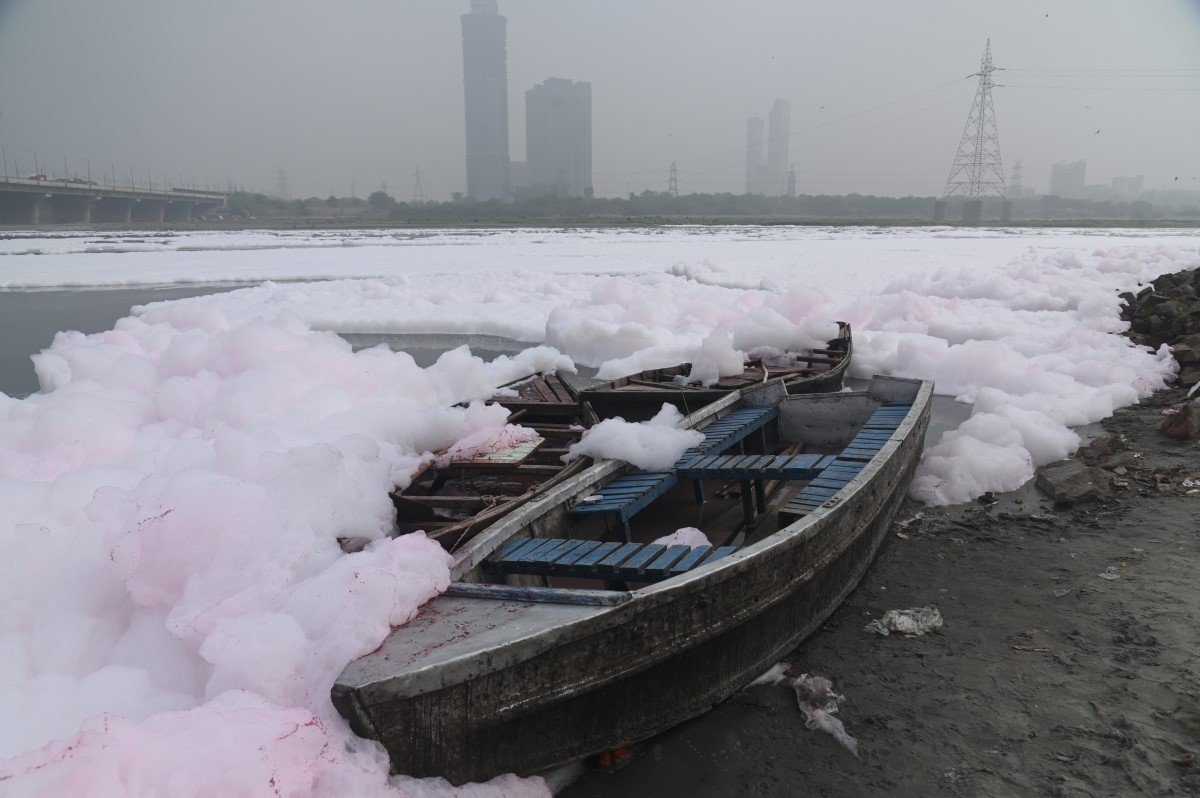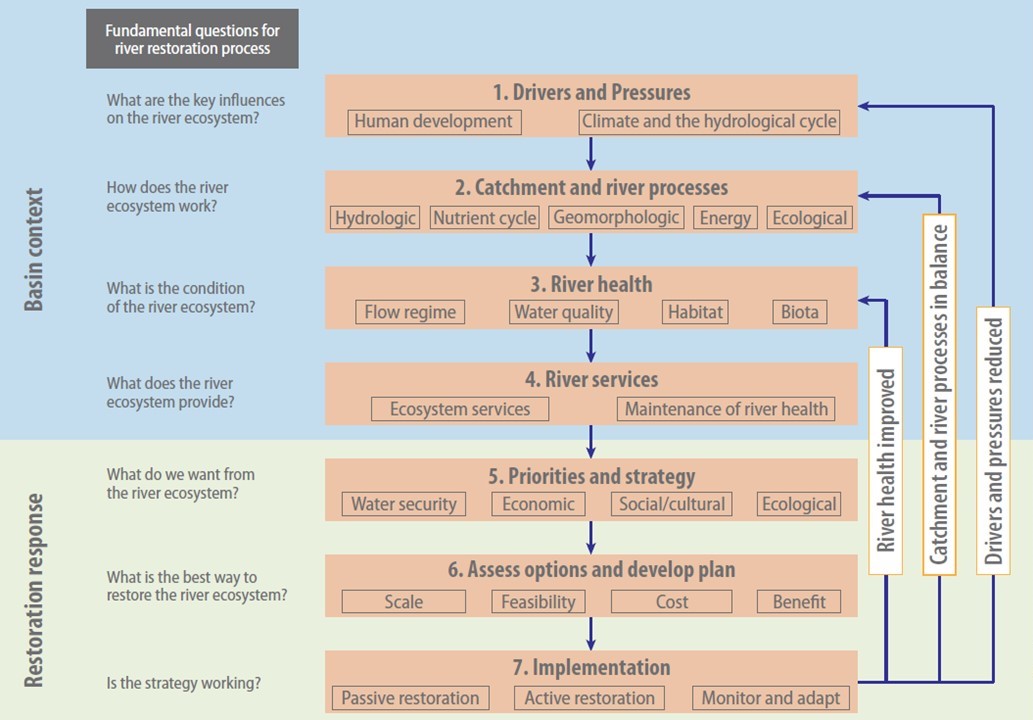
Advancing an Ecosystem-based Approach for Yamuna River Management
India's national capital, Delhi, has developed over many centuries, encompassing a rich and diverse history. Each successive regime that ruled Delhi shaped parts of the city’s landscape, its settlement patterns and ecological buffer zones. Today, this capital sits amidst the National Capital Region (NCR) – a 55,083 sq. km region that is India’s leading GDP contributor and one of the largest urban agglomerations in the world.
Nestled within its growing landscape is the Yamuna River, a lifeline that has witnessed the city’s evolution over centuries. Through the lens of the Yamuna, this blog delves into the inherent complexity of river ecosystems emerging due to their dynamic nature and interconnectedness with urban areas. Additionally, it outlines the growing need for a comprehensive approach and coordinated efforts to ensure the sustainability of river ecosystems in urban environments.
From Sacred to Profane
Rivers are essential components of our natural environment; providing freshwater resources, supporting ecosystems, facilitating transportation and offering recreational opportunities. Rivers have played a central role in religious myth and rituals, often becoming flashpoints in public discourse. Despite this, many Indian rivers face a grim reality. According to reports, close to half of India’s rivers remain severely polluted.
The Yamuna River, a major Ganges tributary, battles severe environmental degradation, ranking among the world’s most polluted rivers. Climate change continues to add newer dimensions of risk to this reality.
Battling Environmental Degradation

In October 1955, a major flood caused the Yamuna to shift course towards the Najafgarh channel, previously part of the Sahibi River. This led to contamination, as the Yamuna shifted near the sewage contaminated Najafgarh waters. Over the past few decades, untreated sewage and effluent outflows, alongside solid waste disposal, led to continuous degradation. Today, only 2% of the river length flows through Delhi yet the city is responsible for about 76% of the total pollution load in the river.
As per Ministry of Housing and Urban Affairs (MoHUA) guidelines, the benchmark for reuse and recycling of wastewater is 20% (service level benchmark for urban water and sanitation). However, in the case of Delhi approximately 12% of total wastewater generated is reused, the remainder is discharged into the Yamuna. Though the city's infrastructure is substantial, it encounters numerous challenges in effectively managing its water resources. Pollution source mapping and understanding the drain network is crucial for assessing and addressing the contamination in water bodies.
Delhi’s Drains
The drainage morphology of Delhi is largely defined by the Aravalli foothills and connected outcrops. Irrigation & Flood Control (I&FC) department classifies Delhi into six drainage zones: North, West, Central Northwest and Southeast, Central South and Southeast, East, and South. These zones encompass both natural drainage and engineered stormwater drains, with many of them conveying a blend of effluent and untreated sewage.
Like the Yamuna River's north-south bisection of the city, the Najafgarh drain cuts across Delhi from west to east. Contributing 60-70% of the pollution affecting the Yamuna, the Najafgarh basin, largest in the National Capital Territory (NCT) of Delhi, covers two-thirds of the city. It is accompanied by other drainage systems like the Barapullah basin and the Trans-Yamuna basin which have catchments spread over a region beyond NCT. Given the volumes of untreated wastewater they carry, all major drains act as continuous channels of waste, sludge, sewage and other pollutants, adversely impacting the river ecosystem and dependent habitation along the flood plains.
In addition to this continuous cycle of contamination, extreme weather events add further risk. Of late, the capital has witnessed increased incidents of floods. Since the 1900s, Delhi has experienced nine major floods, during which the Yamuna River has exceeded its danger level of 204.83 meters on 20 occasions in the past 33 years. Creating a deeper understanding of river ecosystems and concepts like “room for rivers” to restore the natural flood plains of rivers, is crucial for environmental sustainability and flood management in dense urban areas. By preserving the natural floodplains and wetlands, cities may be able to mitigate the risk of devastating floods while also improving water quality and biodiversity, fostering a healthier urban ecosystem.
Need for an Integrated Approach to River Management
In response to the evolving challenges facing the Yamuna River, a proactive step was taken with the establishment of a High-level Committee (HLC) in 2023 under the directive of the National Green Tribunal (NGT) and led by the Lieutenant Governor of Delhi. Given the unique governance structure and jurisdictions of National and state government in NCT Delhi, collaborative action plans (figure 2) with multiple departments (figure 3) require a comprehensive approach to restore the river's health and ensure sustainable management.
Revitalizing the Yamuna in Delhi not only requires a substantial investment but also a multi-pronged effort from coordinating agencies across various government levels. Streamlining and synergizing actions and mandates of participating agencies will be key for implementing the action plans laid out by the high-level committee (HLC).
To effectively address modern river restoration challenges, it is imperative to integrate comprehensive strategies. Hence building a strategic framework (figure 4) for the Yamuna is necessary, recognizing the dynamic and complex nature of its river ecosystem and basin context. This involves a systems-based and adaptive approach that can address concerns that include, identifying and reducing drivers and pressures currently plaguing the river ecosystem, balance catchment and river processes, and improve river health through a comprehensive restoration strategy.

Successful implementation of such a framework requires coordinated efforts from various government agencies, NGOs and local communities. It would serve not merely as a manual but will offer a long-term roadmap for the rejuvenation and restoration of the river systems, ensuring its health and vitality for generations to come. Additionally, systematic monitoring and evaluation of river cleanup initiatives at activity, outcome and system scale can further bolster river management interventions (figure 5).
Delhi's growth and the Yamuna's well-being are intertwined, and it is in the city's best interest to prioritize comprehensive river management. Through collective efforts, strategic planning and a commitment to change, Delhi can reclaim its lifeline and ensure that the Yamuna remains a continued source of life for generations to come.
All views expressed by the authors are personal.